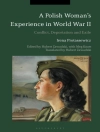E’ noto come Leonardo da Vinci componesse i sui scritti in modo che fossero leggibili soltanto se specchiati. E’ altrettanto noto come lo stesso Leonardo fosse attratto dall’ armonia degli opposti (esaltata all’epoca dall’ opera di Nicola Cusano). L’ambiguità dell’ espressione di Monna Lisa, rimarcata dalla famosa opera di Duchamp (l’apposizione dei baffi al celebre ritratto), è emblematica. Ma ancora più forte è il legame fra Leonardo, la natura e il mito. Sembra che egli avesse individuato un canale segreto ed inesauribile dal quale attingere la sua arte e la sua scienza che prefigurava e continua tuttora ad anticipare il futuro.Ed è spesso questa componente (la scienza) del lavoro smisurato di Leonardo, che viene esaltata e ricordata; mettendo troppo spesso in secondo piano la tensione spirituale che alimentava la forza della sua ricerca instancabile.Oreste Ruggiero, autore di questo lavoro L’altro Leonardo, a metà fra la ricerca e l’ omaggio artistico all’ opera del grande genio, è partito dalla considerazione che il Da Vinci usasse, attraverso l’ unione degli opposti, la stessa tecnica della scrittura (che si rivelava se specchiata) anche per le sue opere d’ arte più emblematiche. Il primo tentativo, applicato al San Giovanni Battista ha generato, forse casualmente, un’ immagine simile al famoso “Bafometto”.La ricerca ha approdato infine all’ analisi di una rappresentazione giovanile (21 anni) di Leonardo del territorio della Valle del torrente Nievole. Come sostiene Baltrusatis, nel suo Medioevo fantastico, sembra che il territorio sia animato, secondo la tradizione degli antichi disegni cinesi, da strane figure che paiono emergere dalle rocce.Non è possibile provare che la sommatoria delle coincidenze approdino comunque ad una verità, né è possibile arrogarsi l’ ambizione di individuare e attribuire una sola verità all’ opera di Leonardo. It is known that the writings of Leonardo da Vinci can be red only if mirrored.It is also known that Leonardo was attracted by the harmony of opposites. The ambiguity of the expression of Mona Lisa, emphasized in the famous work by Duchamp (the moustache put on the famous portrait), is emblematic. But the link between Leonardo, nature and myth is even stronger. It seems that he had discovered a secret and inexhaustible channel to draw on for his art and science that have always anticipated the future.It is often this component (the science) of the immense work of Leonardo, that is praised and remembered, leaving too often the spiritual tension that fed the force of his tireless research overshadowed.Oreste Ruggiero, author of this work The other Leonardo, halfway between research and artistic homage to the work of the genius, started from the consideration that Da Vinci, would use, through the union of opposites, the same technique of writing (which could be read if mirrored) for his most emblematic works of art.The first attempt, applied to the San Giovanni Battista has generated, perhaps by chance, an image similar to the famous ‘Baphomet’. And, perhaps by chance as well, the same method applied to the Mona Lisa has created an image similar to the ‘gargoyles’ of the cathedrals, and so on … The research has finally arrived to the analysis of a drawing Leonardo did when he was 21 year-old. It represents the territory of the Valley of the river Nievole. As affirmed by Baltrusatis in his Middle Ages Fantastic, it seems that the territory is animated, according to the tradition of the ancient Chinese drawings, with strange figures that seem to emerge from the rocks.
Oreste Ruggiero
L’altro Leonardo [EPUB ebook]
L’altro Leonardo [EPUB ebook]
Buy this ebook and get 1 more FREE!
Language Italian ● Format EPUB ● ISBN 9788890552861 ● File size 63.5 MB ● Publisher O.R.A.D. Editore ● Published 2012 ● Downloadable 24 months ● Currency EUR ● ID 5168215 ● Copy protection Social DRM












